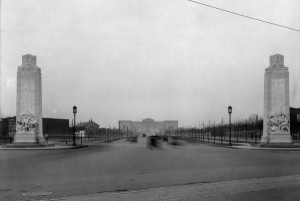The opening of the new Barnes Foundation in Philadelphia has caused some locals to tout the creation of a “museum mile” along the Benjamin Franklin Parkway, with the Philadelphia Museum of Art at one end, the Franklin Institute at the other, and the Barnes and the Rodin Museum in-between. Ever since the City Beautiful movement proposed creating grand civic centers, the idea of clustering urban functions has gained traction. But it only makes sense in selective cases. Grouping theaters, which tend to be open at night, supports pre- and post theater restaurants (as in Broadway and the West End); grouping stores allows shoppers to do errands conveniently. Certain commercial activities—garment-making, finance, commercial art galleries, antique shops—gain by proximity. But there is no reason to group religious buildings, for example, or sports venues. Or museums. Nobody spends two hours in a museum and says, “Let’s go next door for another two hours.” Large buildings such as museums and concert halls may be located on important avenues, but that is done for urban design not functional reasons. The only seeming advantage to grouping museums is for the tourist, who doesn’t know the city. But judging from those paramount tourist destinations, London, Paris, and Rome, even tourists enjoy exploring.


